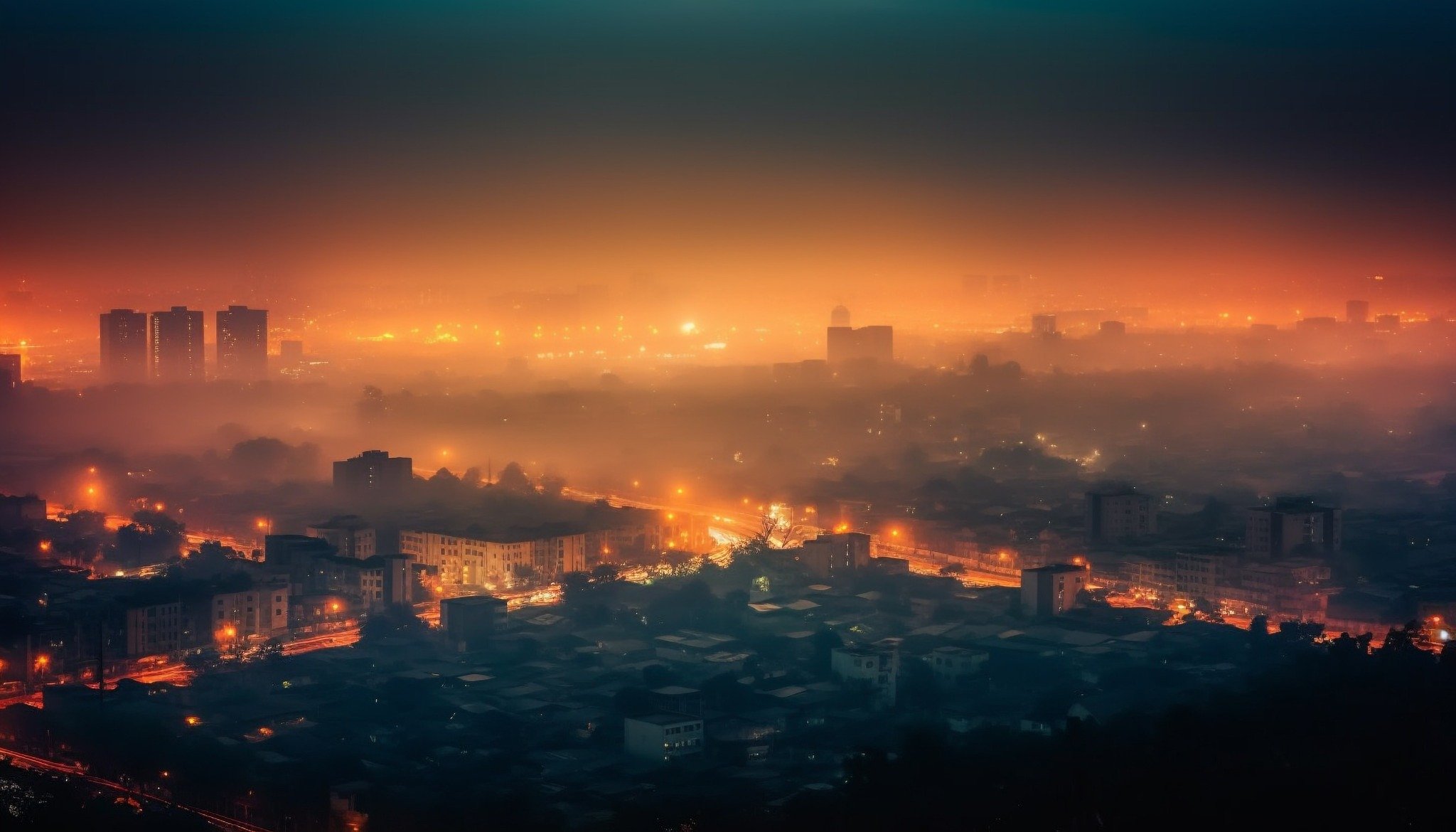Light Pollution and the Night Sky

By: FUN Monster
There was a time when the night sky was filled with stars, but now, what we can see is diminishing due to the widespread use of artificial light. The impact of light pollution goes beyond just our ability to see the stars; it also harms wildlife, disrupts human sleep patterns, and hampers the advancement of astronomical research in general. By better understanding the problem of light pollution, we can act to preserve our night skies.
What Is Light Pollution?
Light pollution is the excessive, misdirected, or obtrusive use of artificial light that interferes with natural darkness. It includes several forms:
- Skyglow: The brightening of the night sky over populated areas, making it difficult to see stars
- Glare: Uncomfortable brightness that can cause visual impairment or discomfort
- Light Trespass: Light spilling into places where it's unwanted, such as bedroom windows
- Clutter: Overly bright or confusing groupings of lights in urban commercial zones
Worldwide, more than 80% of the population lives under skies brightened by artificial light.
Light as a Pollutant
The good thing about light is that unlike other pollutants, it can be cleaned up quickly simply by turning it off or redirecting it. However, when it's misused, it behaves like any other form of pollution, affecting ecosystems and damaging human health. The Environmental Protection Agency recognizes light pollution as an environmental concern due to its ripple effects across species and ecosystems.
- Ecological Impact: Species like sea turtles, birds, and nocturnal insects rely on natural light cycles. Artificial light interferes with their navigation, reproduction, and feeding behaviors.
- Human Health: Disrupted circadian rhythms and melatonin suppression from artificial light exposure can lead to sleep disorders and long-term health issues.
- Energy Waste: Outdoor lighting that spills into the sky is wasted energy, accounting for billions in annual costs.
Sources of Light Pollution
Light pollution is a consequence of a wide range of human activities and is often a consequence of technological innovations that are otherwise useful. For communities, businesses, and individuals to reduce their impact on the night sky, it's essential to understand the different light sources and how to use them wisely.
1. Street and Roadway Lighting
One of the most significant contributors to light pollution is municipal street lighting, especially when fixtures are poorly shielded. Traditional high-pressure sodium or metal halide lamps scatter light in all directions, including upward into the sky. Unshielded fixtures also produce glare, which can be dangerous for drivers and pedestrians.
2. Commercial and Industrial Lighting
Billboards, security lights, and large-scale commercial signs often stay lit all night. These installations contribute significantly to skyglow, especially in densely populated areas. Overly bright or improperly aimed lights from parking lots and warehouses can extend their effect for miles beyond their immediate location. Some cities are now experimenting with automatic dimming systems or light curfews to reduce overnight emissions from commercial sources.
3. Residential Lighting
While less intense than commercial lighting, residential sources are far more numerous. Garden lights, motion-sensing lights, porch lights, and decorative lighting contribute to light trespass, where light spills into neighboring properties or upward into the sky.
4. Vehicles and Transportation
Car headlights, particularly high-intensity discharge (HID) and LED beams, create brief but intense bursts of light pollution. Air and marine traffic also contribute through navigational and safety lighting, which may reflect or scatter in the atmosphere, especially in fog or smog. While necessary for safety, these sources can be mitigated with better shielding and directional technology.
5. Sports and Event Lighting
Stadiums, arenas, and large event venues often use powerful floodlights that operate late into the night. These create massive columns of upward light visible from distant communities. Advanced controls, like timers and motion-sensitive dimming, can reduce their impact.
6. Satellite Mega-Constellations
The most controversial modern source of light pollution is the proliferation of low Earth orbit (LEO) satellites from companies like SpaceX and Amazon. Though not traditionally considered a source of light pollution, these satellites reflect sunlight after dusk and before dawn, increasing background sky brightness. Astronomers warn that this may permanently alter ground-based astronomy if regulation is not introduced soon.
How Bad Is It?
The problem of light pollution is growing. Research published in Science shows that global sky brightness increases by 7% to 10% annually. More than 99% of Americans live where nighttime skies are polluted, and seeing the Milky Way from their backyard will be impossible for many children born today.
- In 1994, during a blackout in Los Angeles, residents unfamiliar with the dark sky called emergency services about a "strange silver cloud" overhead. It was the Milky Way.
- Looking at a light pollution map can help you understand the scale of the problem and how light from urban development disguises the wonders of the night sky even in remote areas.
Is My Night Sky Still Dark?
To determine the condition of your local night sky, you can use a night sky brightness map, which provides satellite-based data and visualizations. You can also:
- Look up during the next new moon and count the visible stars in Orion. Seeing fewer than 100 stars usually means that you have at least moderate light pollution.
- Help to study the problem of light pollution by contributing your own observational data to the Globe at Night project.
What Are the Effects of Light Pollution?
Effects on Ecosystems
- Migratory Birds: Often disoriented by city lights, leading to fatal collisions
- Sea Turtles: Hatchlings may crawl inland toward artificial lights instead of toward the ocean.
- Insects: Attracted to street lamps, they become easy prey or die from exhaustion, affecting pollination cycles.
Effects on Humans
- Disrupted sleep patterns and reduced melatonin levels
- Increased risks of obesity, depression, and even certain cancers due to circadian disruption
Effects on Science
- Astronomical observatories must relocate to increasingly remote locations.
- Space telescopes, like those operated by NASA, are becoming essential as ground-based visibility declines.
Take Action
Combating light pollution doesn't require massive policy shifts. It starts with conscious choices and informed advocacy. Simple changes can restore the beauty of the night sky and protect the ecological balance. Here's how you can make a difference:
- Install fully shielded outdoor lighting that directs light downward.
- Use warm-colored LEDs instead of blue-rich light, which scatters more and causes more skyglow.
- Turn off lights, primarily decorative or landscape lighting, when they're not being used.
- Encourage community initiatives, like adopting dark-sky ordinances or hosting star parties.
- Support organizations like DarkSky International that promote global awareness and action.
What to Teach Kids About Light Pollution
Children are natural advocates for change when empowered with curiosity and tools. You can start by teaching them that light pollution doesn't just disguise the stars so you can't see them; it disrupts nighttime nature. According to National Geographic Kids, animals can struggle to hunt, sleep, or migrate because there's too much light. Kids can help by turning off lights before bed and asking grown-ups to aim outdoor lights down instead of up. Going stargazing and learning more about objects in our solar system can also help to deepen kids' appreciation for the night sky.
Stargazing and Astronomy
Astronomy thrives on darkness. Light pollution directly interferes with:
- Telescope Observations: Distant galaxies and faint nebulae become invisible under skyglow.
- Astrophotography: Long-exposure photography gets washed out by urban lights that disguise objects in the night sky.
- Astronaut Training: Ambient ground lighting can affect simulations and visual tracking.
Even observatories like Mauna Kea and Kitt Peak are affected by encroaching skyglow. And restoring the darkness of the night sky isn't just a scientific necessity; it's also important to retain part of global human culture, ensuring that future generations can still look up and see the wonders of the universe.

